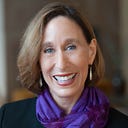Disrupting Education — Let’s not waste this crisis
When I was a kid I went to summer camp in rural Maine. It was a rustic place on the banks of a small lake where we spent the day outside, swimming, learning archery and water skiing, doing arts and crafts, and building meaningful friendships. I lived for summer camp, and cried for days when I had to return to school.
In my quest to stay at camp, I wrote a letter to the camp director urging him to turn the camp into a year-round school, and included a full curriculum demonstrating how we could learn everything we needed in that environment.
Learning can take place anywhere.
This is important to consider now. The pandemic that is threatening the opening of schools in the Fall provides an opportunity to completely rethink the way we teach and learn. Instead of trying to figure out how to go back to classrooms, which have essentially looked the same for over a hundred years, we have a rare chance to look forward, considering even better ways to educate than we have in the past. School is but one way to learn.
School and Learning are two different things.
In my classes at Stanford on creative problem solving, I do an exercise that focuses on unpacking assumptions about a particular issue, and then challenging those assumptions in order to explore alternatives that might be even better. It is easy to do that with education — there are so many assumptions! They include classrooms, teachers, textbooks, homework, final exams, grades, attendance records, multiple choice tests, homeroom, lockers, after school sports, etc,
What happens when we turn our assumptions about education upside down?
I’ve done this exercise with students of all ages, and they are giddy with the prospect of reinventing education. They come up with endless ways to learn that they know would be more engaging than their traditional classrooms, including student-initiated activities, internships that run all year long, and bold multi-year projects.
What could be more important than engaged students?
Being engaged in the material is the best predictor that a student will remember it. Think back to your own education — what do you remember? The material in a boring class evaporates right after the exam, whereas the lessons from powerful experiences last a lifetime.
As a longtime educator — having taught students from kindergarten to medical school — I can easily argue that most classrooms are terrible learning environments. Except for those for young children, classroom spaces rarely inspire the imagination. Learning online is worse. Students who have been told that they need to take all their classes online this coming year are bereft, and are longing to go back to school, which many students found tortuous beforehand. This says a lot about the state of education today.
It behooves us to redesign education.
We know that learning increases when students are hungry to know the information. This requires engagement and curiosity, and this does not have to happen in a classroom. Just as Darwin asked questions about finch beaks and tortoise shells while sailing around the Galapagos, and ultimately developed a theory of evolution, kids of all ages can learn how to pay attention to the world around them, to ask thoughtful questions, and to extract important lessons no matter where they are. These are skills that are critical throughout our lives, well beyond our days in school.
The key to learning is cultivating curiosity.
Cultivating a mindset of curiosity allow you to turn anything, including a game of baseball, a day at the beach, or cooking dinner into an engaging learning opportunity. A simple bowl of spaghetti with meat sauce and Parmesan cheese offers lessons on boiling points, protein denaturing, and fermentation. Add in a salad with dressing and you learn about cell structure and emulsions. And a cookie for dessert is icing on the cake, teaching kids about acids and bases in baking powder.
Let’s sprint to the future, not rush back to the past.
We need to use this opportunity to completely rethink teaching, learning, education, and school. Instead of looking backward, we need to look forward. What can we do now to educate young people that we never could have done before? How do we break free from our assumptions about school to consider education more broadly? What experiences can we create or motivate that will prove to be transformative?
This will take work, creativity, and a commitment from the community. But, given the prospect of shuttering classrooms for the coming year, this is the perfect time to rethink education at all levels, creating powerful learning experiences that last a lifetime.
Let’s not waste the current crisis.
